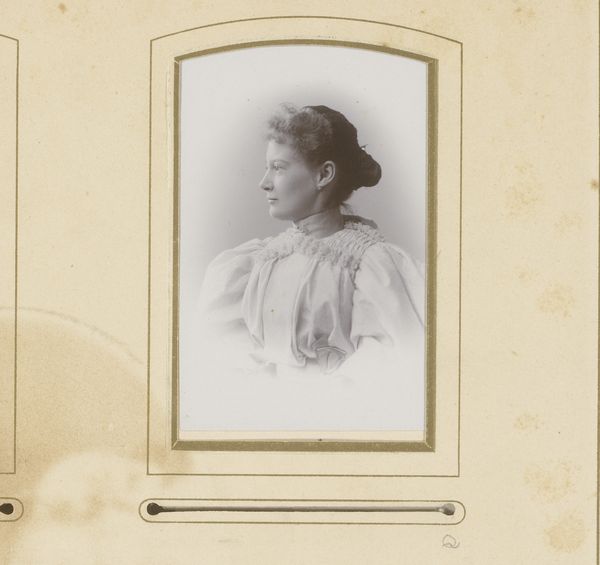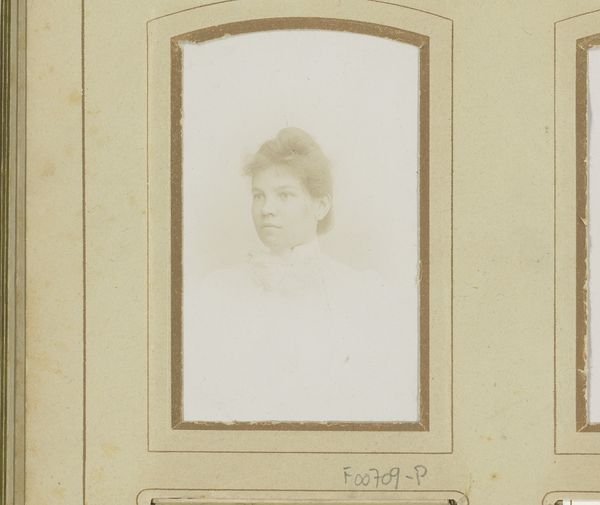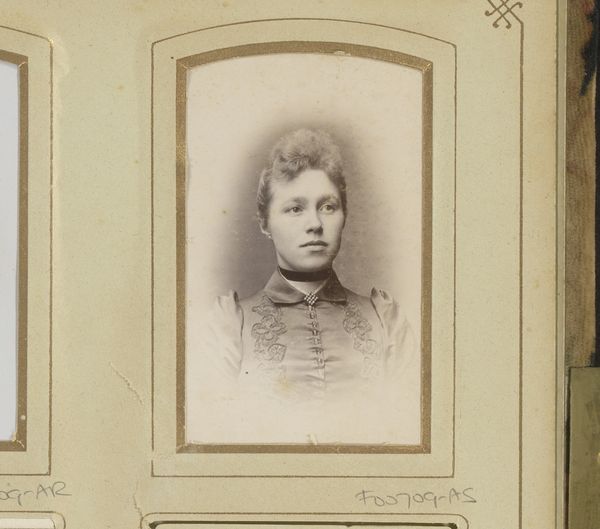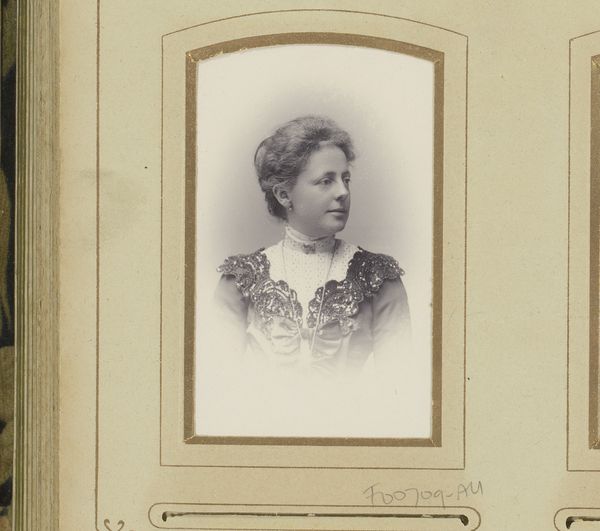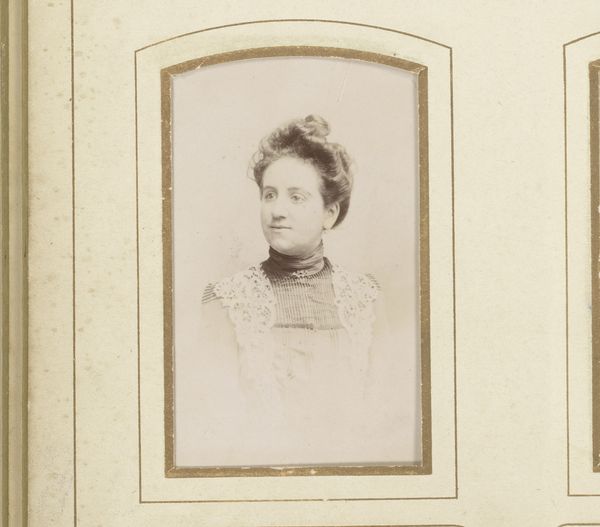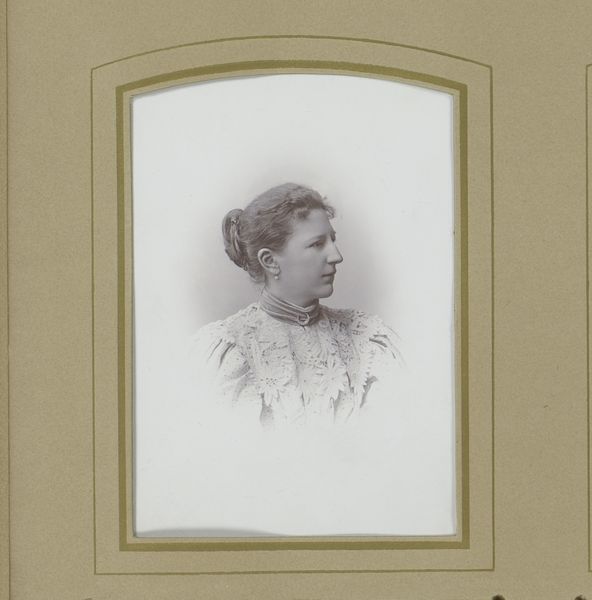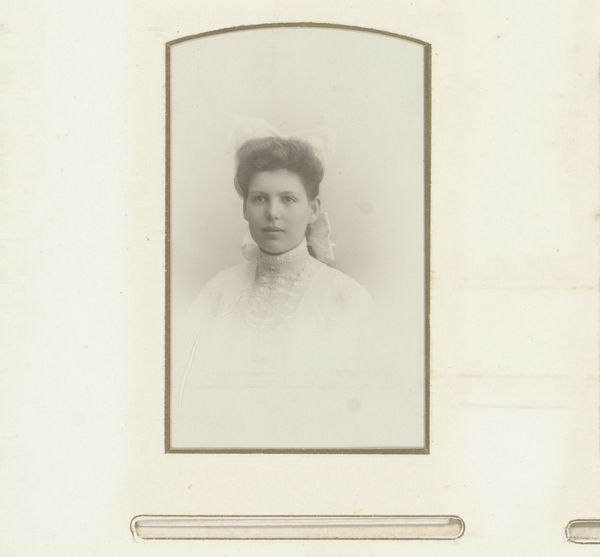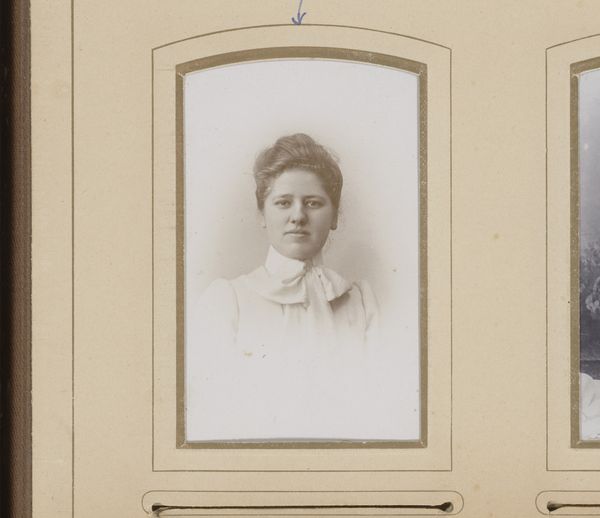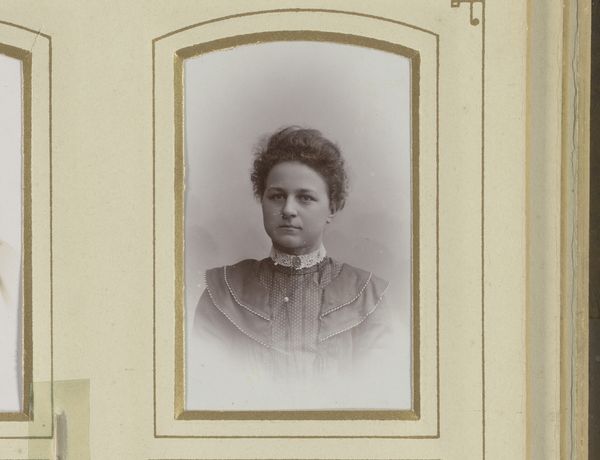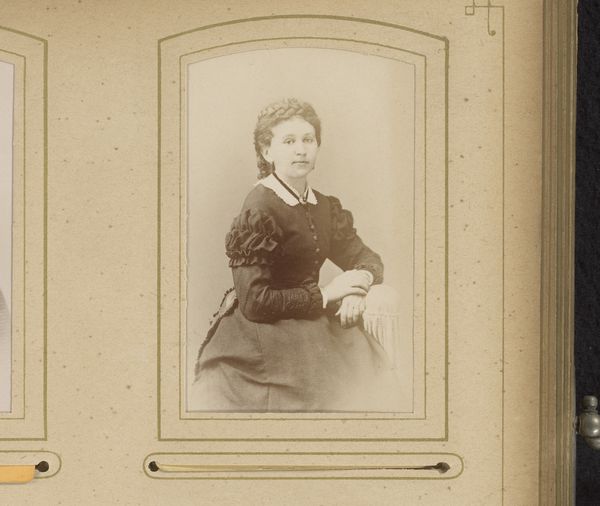
Dimensions: height 83 mm, width 52 mm
Copyright: Rijks Museum: Open Domain
Curator: Here we have "Portret van een vrouw," or "Portrait of a Woman" by Adolphe Zimmermans. It's a photograph from somewhere between 1884 and 1913, residing here at the Rijksmuseum. The photograph’s delicate frame and the subject's poised expression immediately transport me to the late 19th century. Editor: It evokes a quiet formality, doesn't it? The composition, mostly muted tones and diffused lighting, speaks volumes about the era's ideals around representation of women, and what that "respectability" looked like. Curator: Precisely. The use of photography itself was evolving, becoming more accessible, which influenced who was being portrayed and how they were presented to the public. These portraits were often carefully staged and meant to project a certain image, reinforcing social standings. Editor: Looking at her clothing, we see the high-necked dress and restrained hairstyle—symbols of modesty and virtue, really hallmarks of the period that defined expectations and constraints on women's lives. One cannot overlook that here we also see a visual enforcement of gender roles. Curator: Certainly, photography had a powerful role in creating and cementing those visual narratives and expectations within the social landscape. Moreover, institutions like the family photo album, filled with images like these, propagated those ideas directly. Editor: It is almost dreamlike but controlled—I feel an echo of both what could have been and what should have been during this period, which is perhaps what brings the weight of the historical lens, viewing through the passage of time and social transformation. It’s not simply about admiring beauty, but about confronting and exploring cultural assumptions and shifts around female identity that are very present even now. Curator: That intersectional aspect makes reflecting upon these images much richer, drawing lines between historical constructs and how they have persisted through the present, shaping how we are influenced today, and can change moving forward. Editor: Absolutely, I think that’s where the strength in viewing lies – in acknowledging this rich exchange that art encourages to reflect, converse, question, and re-think the world in ways that promote a more just future.
Comments
No comments
Be the first to comment and join the conversation on the ultimate creative platform.
